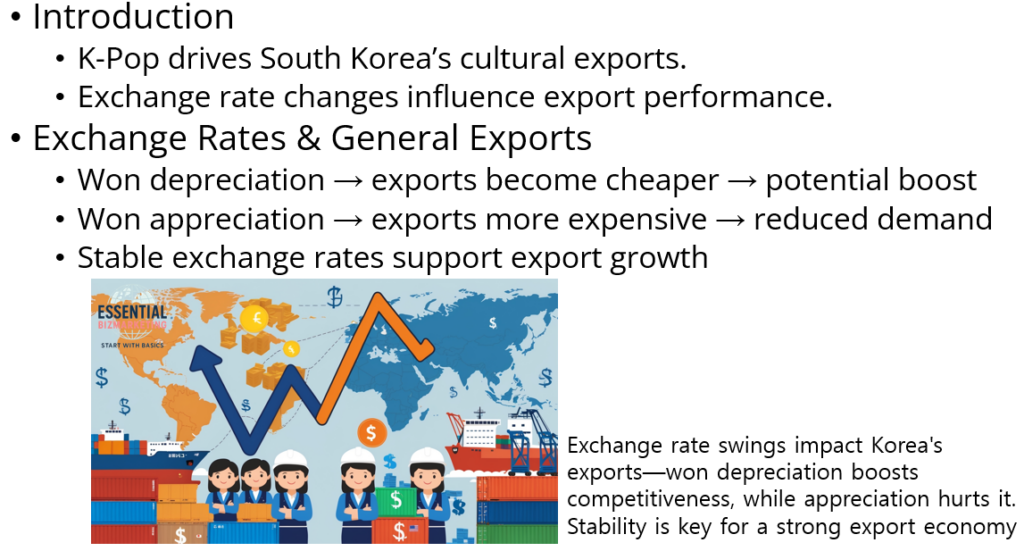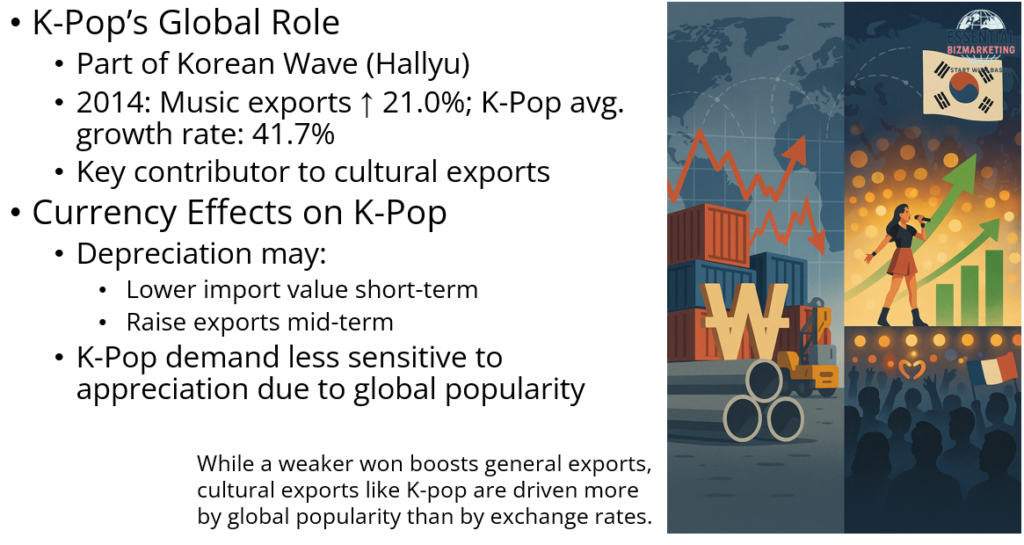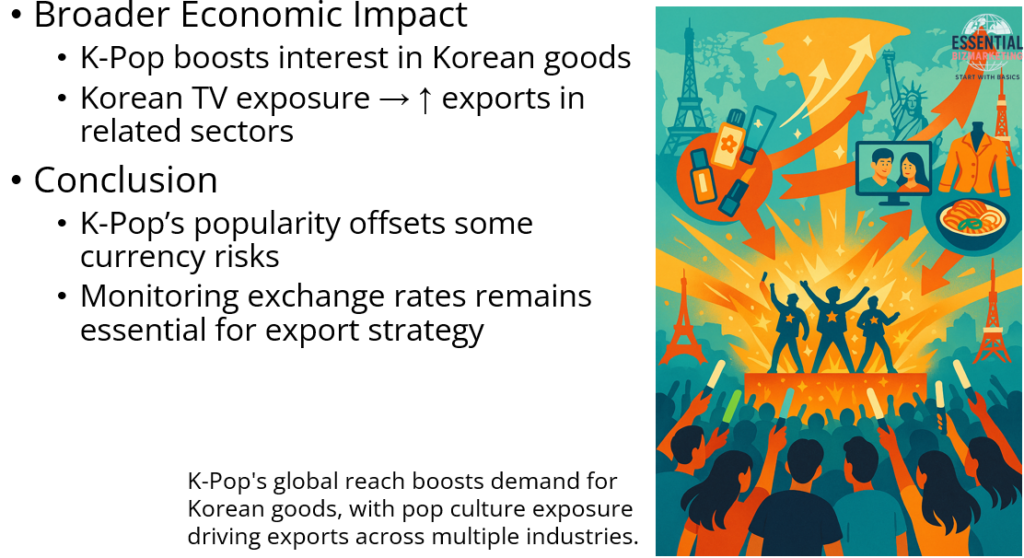Understanding the Relationship Between Currency Values and Cultural Exports

The global proliferation of K-Pop has positioned South Korea as a significant exporter of cultural content. However, the dynamics of international trade mean that factors such as exchange rate fluctuations can substantially influence export performance. This article examines how variations in the value of the South Korean won affect the export of K-Pop music and related cultural products.
Exchange Rate Fluctuations and Their General Impact on Exports
Exchange rate volatility is a critical concern for export-driven economies like South Korea. When the won depreciates, Korean products become more competitively priced in foreign markets, potentially boosting exports. Conversely, an appreciating won can make exports more expensive and less attractive internationally. Research indicates that stabilizing exchange rate fluctuations is vital for maintaining a robust export economy.
The Unique Position of K-Pop in the Global Market

K-Pop, as a component of the broader Korean Wave (Hallyu), has experienced remarkable global popularity. In 2014, the music industry’s content exports increased by 21.0% compared to the previous year, with an average annual growth rate of 41.7% for K-Pop during that period. This surge underscores K-Pop’s significant role in South Korea’s cultural exports.
Exchange Rate Effects on K-Pop Exports
While general export sectors are sensitive to currency fluctuations, the impact on cultural exports like K-Pop can differ. Studies suggest that the depreciation of the won may temporarily reduce import values and, in the mid-term, expand export values, thereby narrowing trade deficits. However, the unique demand dynamics for cultural products mean that factors such as global popularity and consumer preferences can sometimes offset the adverse effects of currency appreciation.
Broader Economic Implications of K-Pop’s Global Reach

The influence of K-Pop extends beyond direct music sales. Exposure to Korean pop culture has been shown to alter foreign consumers’ preferences, leading to increased demand for Korean goods across various industries. Econometric analyses reveal that heightened exposure to Korean TV shows correlates with increased exports in related sectors, indicating a broader economic impact of cultural exports.
Conclusion: Navigating Currency Fluctuations in Cultural Exports
While exchange rate fluctuations undeniably affect export dynamics, the K-Pop industry’s global appeal provides a buffer against some of these challenges. The inelastic demand for cultural products like K-Pop suggests that even amid currency appreciation, the international appetite for Korean music remains robust. Nonetheless, understanding and monitoring exchange rate movements remain crucial for strategizing and sustaining the growth of K-Pop exports.
📚 References
Kim, S.-D. (2018). The Impact of Exchange Rate Fluctuations on Korean Industry. Korea Institute for Industrial Economics and Trade. Retrieved from https://papers.ssrn.com/sol3/papers.cfm?abstract_id=4199849
Korea Development Institute. (n.d.). Impacts of Currency Fluctuations on Exports and Imports and the Trade Balance. Retrieved from https://www.kdi.re.kr/eng/research/analysisView?art_no=3411
Kim, S., Agrusa, J., Lee, H., & Chon, K. (2017). The effect of Hallyu on tourism in Korea. Journal of Open Innovation: Technology, Market, and Complexity, 3(4), 22. Retrieved from https://jopeninnovation.springeropen.com/articles/10.1186/s40852-017-0075-y
Choi, K. (2018). Evidence from the Globalization of Korean Pop Culture. Singapore Management University. Retrieved from https://economics.smu.edu.sg/sites/economics.smu.edu.sg/files/economics/Events/Merlion2018/Iona-paper.pdf
📁 Start exploring the Blog
📘 Or learn more About this site
🧵 Or follow along on X (Twitter)
🔎 Looking for sharp perspectives on global trade and markets?
I recommend @GONOGO_Korea as a resource I trust and regularly learn from.
